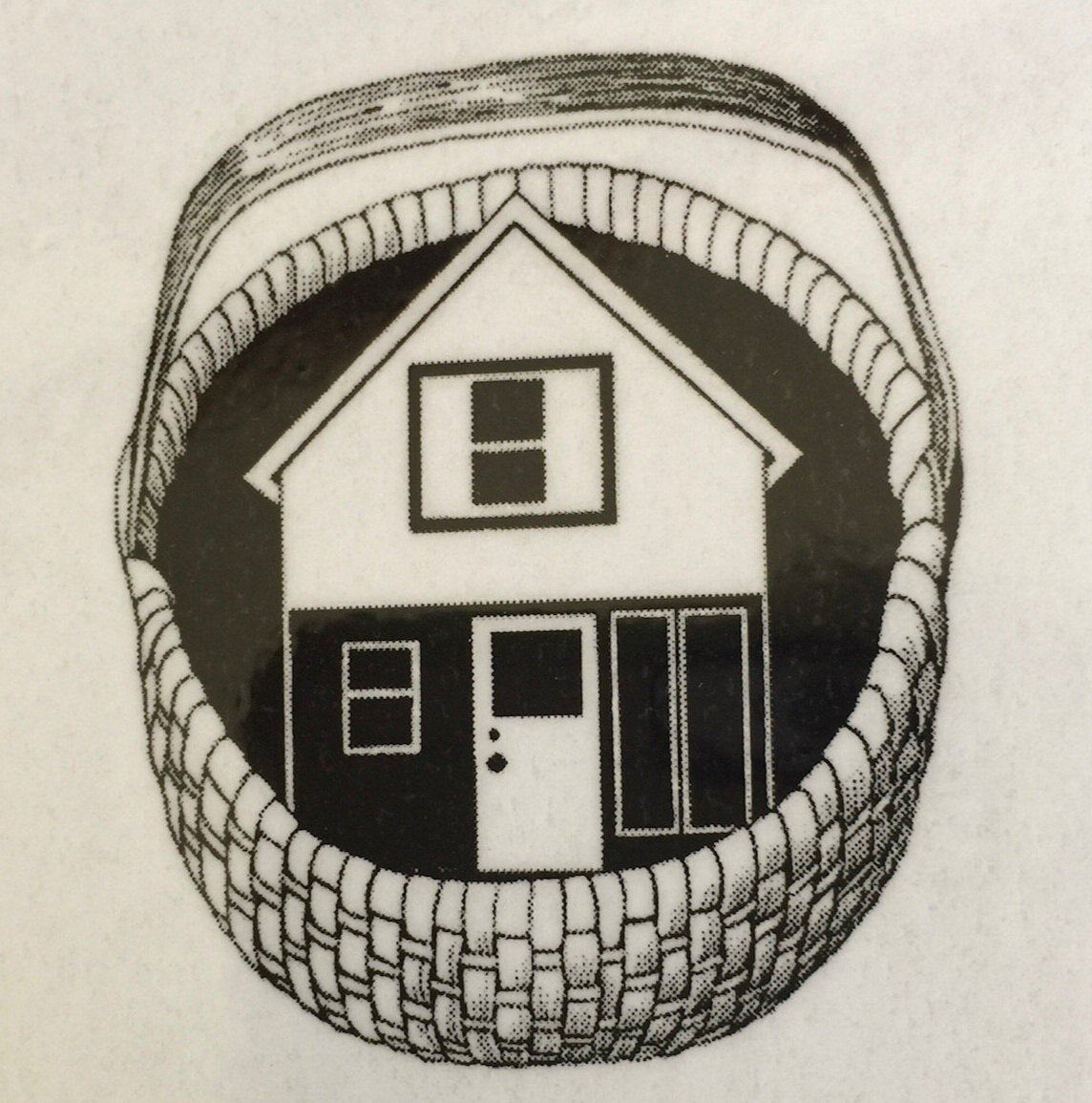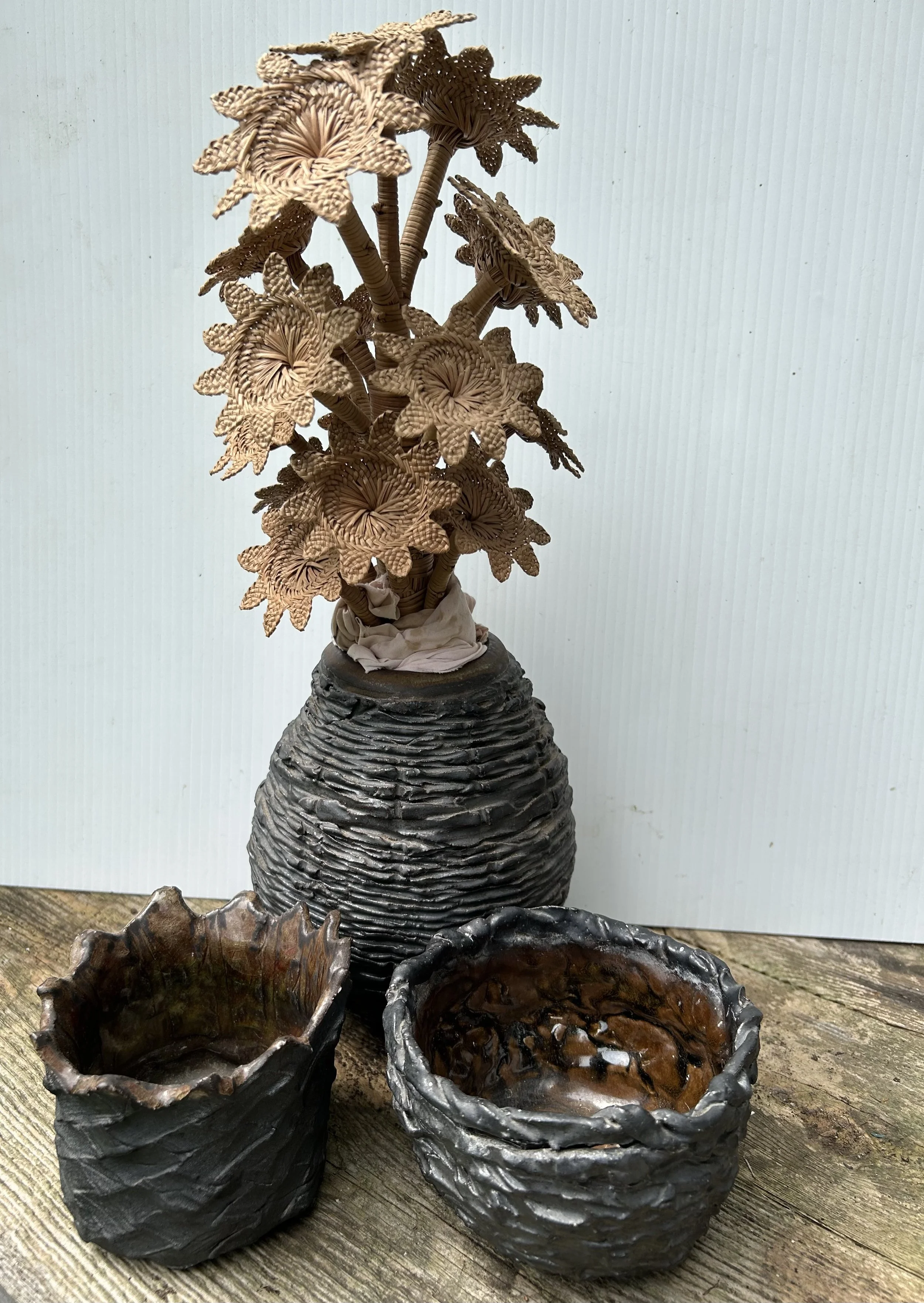Threads 113: Combining the craft of basketry and pottery
'Pottery is our oldest handicraft. In prehistoric times, most likely water was carried in woven baskets lined with river clay. After the water was poured out of the container the layer of clay dried. The loss of moisture caused the shape to shrink and separate from the sides of the basket. When the clay, now shaped like a pot, was removed, and dried in the sun on hot sand, it retained the basket pattern. Early men and women then discovered that they could harden the molded pottery in hot ashes and make sturdy containers to transport and store food. From these vessels would have been extended the pots formed by hand and decorated with crude tools.'
https://www.lakesidepottery.com/HTML%20Text/brief%20history%20of%20clay_pottery.htm
Reading about this historic use of using clay and with basketry sparked my interest in experimenting on my own.
Having been a student at Sherdian College School of Design, I had experience working in the pottery studio for a semester. So I had worked with clay and understood the principles of pottery. I realized I needed to work with a potter to find the correct clay and have help with and access to glazing and a kiln for firing.
I realize making clay pots, that it is necessary to add the clay on the inside of the basket so that the impression of the basket weaving could be seen on the outside - as the side of the basket that the clay is added to is smooth which is in this case on the inside.
I made coils of clay and pressed them into the sides of the basket as I was weaving the basket. It was very messy! It was quite difficult as my hands were working on the inside.
The basket was then left to dry and carefully watched, as the basket material had to be snipped to allow the clay to shrink particularly at the base.
You will see from the examples shown, the smaller platted one, has a pointy boarder, which was carefully finished as the clay dried. The taller one was put on a wheel and the top turned on the wheel. The last one was finished with a woven boarder. They were all woven with either round or flat reed. Before firing, it was important to snip off as much of the basketry material as I could to prevent cracking. I handed over the final steps to a potter to complete the firing and glazing as I moved to Lanark County. The pots were bisque fired and all the basketry material was burned off. And finally the were glazed with a black glaze and fired again.
I wonder if any other basketmakers have experimented with clay. I would like to know. Perhaps we could start a whole new venture? Reach out and let me know!

